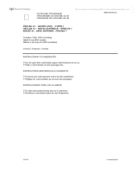- (a)
Child and Insect, by Robert Druce, is about a young boy’s childhood experience, in which he learns an important life lesson. The main theme that encircles the poem is the boy’s coming of age, as he undergoes a traumatic and disappointing experience: the catching of a grasshopper. In Child and Insect, the author uses many poetic devices such as alliteration, repetition, symbolism, personification, and onomatopoeia. The writer also employs many sensory images, especially visual and aural ones. The real beauty of this poem is the fact that something so subtle and basic can make such a big impact on someone’s life.
In Child and Insect, the setting is physical in the beginning as a young boy catches a grasshopper in the grass blades of a meadow and then joyfully runs with it in his hand to show his mother. However, as the poem progresses, the setting becomes less physical and more emotional. The boy’s ecstasy transforms into fear and horror, as he soon realizes what he has done.
The effectiveness of this poem is based largely on the abundance of sensory imagery. Visual images are the most commonly used. For example, in the second stanza, “its dead struts snapped even the brittle lidless eyes crushed into the tangle”. This shows how badly damaged the grasshopper was, which made it even more surprising when the grasshopper somehow revived itself later in the poem. This also made the boy feel tricked and betrayed, as he was put through so much grief for no reason. In addition, it is interesting if whether or not the author used a grasshopper deliberately, as they are symbolically known to be lucky, which would explain how the grasshopper “magically” came back from the dead. There are also some good uses of aural imagery. For example, in the seventh stanza, “And once again incredibly it skirls unspoilt its chirruping music”. Also, in the first stanza, “But kneeling at her side finds only a silence in his fearful clutch”. This line is very interesting because there is technically no sound in this aural image, only a silence. This shows that the poem is somewhat contrasted, as the grasshopper is silent at first and then as soon as it came back to life, it’s making beautiful music again. The visual and aural image of his mother laughing, putting an arm around him, and him shaking her off, adds an interesting layer to the central image. It shows two things; 1) the boy’s rage and frustration and 2) that the boy is growing older, by displaying his rebelliousness and his pride.







